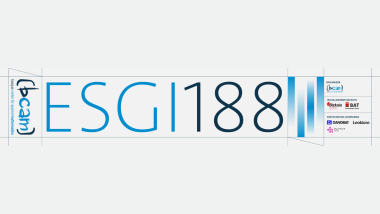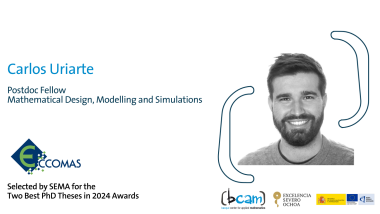The scientists who inspired us (I): Ada Lovelace
In order to achieve full and equal access to and participation in science for women and girls, and further achieve gender equality and the empowerment of women, the United Nations General Assembly declared February 11th as the International Day of Women and Girls in Science. Ever since many activities are organized on this day to give visibility to women scientists and to encourage girls to pursue a scientific career.
In honour of this occasion, at the Basque Center for Applied Mathematics - BCAM we have come up with the idea of sharing some stories about the women that inspired our researchers to work on science. The first one joining this initiative has been our postdoctoral researcher Christina Schenk. Keep reading to find out how Ada Lovelace inspired her journey in mathematics:
Ada Lovelace has inspired me since high school. The main reason for that arose from some mentors of the Ada Lovelace Project visiting my school. The Ada Lovelace Project is a project that aims towards motivating girls in considering a career in STEM (Science, Technology, Engineering and Mathematics) and in showing them the powerfulness of STEM for real-world applications. The project team organizes workshops, visits schools, participates in conventions and overall provides mentorship in different settings. Throughout my Bachelor and Master studies, I was active as a mentor within this project myself.
Augusta Ada King, Countess of Lovelace (1815-1852) was a mathematician and writer. She worked on Charles Babbage’s computer called the Analytical Engine. She developed an algorithm that could be run on this machine which is known as the first one published of this kind.
Her contribution is of high value for my current research as well as I mainly work in the field of mathematical modeling with a strong connection to applications and computational and algorithmic developments. We nowadays also have to come up with new algorithms to efficiently use the computational resources for complex applications. The main difference is that the resources are much more powerful than they used to be and that we can rely on more earlier developments.
At BCAM, I mainly work on a project related to predictive metabolic modeling of microbiomes and human metabolism through Monte Carlo sampling. With this project we will come up with better predictive models for microbiomes and the human metabolism. This may for example enhance the biofuel production and work towards a better energy future and support the early diagnosis and treatment of human diseases. These problems are extremely complex and require a strong collaboration between biologists, engineers and applied mathematicians. Their solution requires the combination of powerful complex mathematical methods with large amounts of high quality experimental data in an extremely efficient computational setup.
Ada Lovelace is mainly known for her contribution to the Analytical Engine but she had many other interests as well. As a child she was already interested in making it possible to fly. She designed wings according to the anatomy of birds and put her findings on record in form of a book called Flyology. She also worked on the development of a mathematical model to understand the function of the brain in terms of understanding the connection of thoughts and nerves. Unfortunately she did not fully succeed.
Ada was friends with Mary Somerville, another famous mathematician, who was her tutor as well. Through Mary, Ada met Charles Babbage. He showed Ada the prototype of the Analytical Engine and caught her interest, such that she decided to translate Luigi Menabrea’s article on the Analytical Engine into English. She added a lot of additional notes. These notes included a technique for calculating Bernoulli numbers using the Analytical Engine. Her notes were published in 1843 and after her death published again.
Nowadays she is known as the first computer programmer and her contribution as the first computer program.

Christina works on Predictive Metabolic Modeling of Microbiomes and Human Metabolism Through Monte Carlo Sampling within BCAM’s group on Modeling and Simulation in Life and Material Sciences.
Related news
Zentroari buruz
ESGI 188 (European Study Group with Industry) Bilbon izango da 2025eko maiatzaren 26tik 30era
BCAM pertsonak




